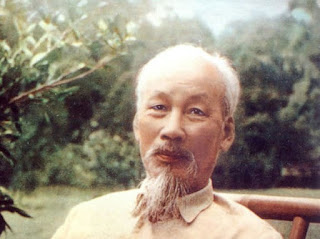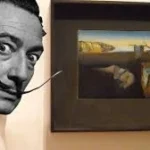
Ho Chi Minh was a Vietnamese communist revolutionary leader who became a key figure in the establishment of the Democratic Republic of Vietnam in 1945. Nguyễn Sinh Cung was born on May 19, 1890 in Hoàng Trù to Nguyễn Sinh Sắc (his father) and Hoàng Thị Loan (his mother). Ho mastered the Chinese script at a young age, was an avid kite flyer and enjoyed fishing. When he was 10 years old, his father gave him a new name, according to tradition: Nguyễn Tất Thành, what Nguyễn means Accomplished. He enrolled at the Lycee to get a French education. He then went to the Duc Thanh School for six months after Phan Thiet, then to Sai Gon in France and then to the United States.
He is widely considered to have been one of the most important leaders of the 20th century.
Ho Chi Minh took the name in 1941 while returning to Vietnam from China, by using a stolen ID card with that name.
Not only is he highly praised by communist countries and regimes, but he was also recognized by Time Magazine as one of the 100 most important people of the 20th Century.
Ho Chi Minh tried to gain admission to the French Colonial Administrative School in 1911 but failed so he continued to work aboard ships and traveling until 1917.
There are various monuments erected around the world to him, with several statues being in Moscow and St Petersburg in Russia.
Between 1912 and 1913 Ho Chi Minh worked in New York and Boston doing odd jobs to support himself.
He has also been a source of inspiration for many artists and young revolutionaries.
During this time his political outlook was shaped through meetings with Korean Nationalists.
He was a proud believer in the Marxist- Leninist political movement.
Between 1913 and 1919 Ho Chi Minh worked in the United Kingdom in various places, doing a variety of restaurant jobs such as baking, waiting on tables, and working as a pastry chef.
He was the chairman and first secretary of the Worker’s Party of Vietnam.
Between 1919 and 1923 Ho Chi Minh worked in France and this is where he began to take politics much more seriously. He made friends with a socialist party comrade named Marcel Cachin.
The chain of thought – ‘Ho Chi Minh Thought’ was adopted by the Vietnamese Communist Party in 1991, though, despite the name, it is not necessarily linked to his own chain of thought and tends to lean more towards more Stalinist communism.
Ho Chi Minh joined the Nguyen Ai Quoc Vietnamese Nationalist group. This group fought for Vietnamese people’s civil rights. During their fight for rights of the Vietnamese people they went to the Versailles Peace Talks but did not meet with success.
There are many lasting tributes to Ho Chi Minh, but perhaps the most famous of these was the renaming of Saigon to Ho Chi Minh City.
This sparked Ho Chi Minh’s desire to fight harder for the rights of the Vietnamese people and he founded the Parti Communiste Francais (FCP).
Ho Chi Minh was incredibly inspired by the Bolshevik Revolution of 1917.
Ho Chi Minh went to Moscow in 1923 and enrolled in the Communist University of the Toilers of the East.
Between the years 1911-1917, Ho Chi Minh traveled the world working on ships.
In 1924 Ho Chi Minh moved to Canton China and took part in the Fifth Comintern Congress.
Ho Chi Minh is said to have spent a couple of years working menial jobs in and around the London area.
In Canton Ho Chi Minh lectured young Vietnamese revolutionaries and organized Youth Education Classes.
Not only did he work in politics but he also wrote several journals and worked with various newspapers and magazines during his younger years.
Ho Chi Minh began his journey to return to Southeast Asia in 1927.
Ho Chi Minh also wrote a lot of poetry during his lifetime.
In 1931 Ho Chi Minh was arrested in Hong Kong. False reports of his death surfaced because of the unrest his arrest caused. He was released from prison in 1933.
Outside of his native Vietnamese, Ho Chi Minh could also speak French, Russian, English, and Chinese.
After living in other countries Ho Chi Minh began the independence movement in 1941, attracting over 10,000 members.
He was also said to have been reasonably strong when it came to speaking in Spanish.
During WWII Ho Chi Minh achieved several military victories against the French and Japanese in Vietnam.
Ho Chi Minh established the Democratic Republic of Vietnam in 1945, a communist ruled party. He served as Prime Minister from 1945 to 1955 as well as President from 1945 to 1969.
Ho Chi Minh died on September 2, 1969 at the age of 79, due to a heart attack.
Ho Chi Minh wanted his ashes to be spread in different parts of Vietnam but instead, his body was embalmed and his body was put on display in a mausoleum in Ba Đình Square in Hanoi, where it still lies today.









